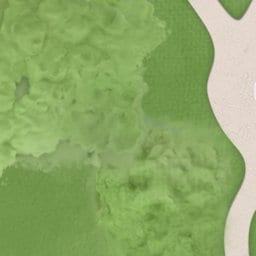
Butterflies - Disney Animals
Butterflies at Walt Disney World Resort
Many of our parks and Disney Resort hotels grow special flower gardens designed to attract local butterfly species—and it’s working! Walt Disney World Resort is home to more than 70 butterfly species.
Butterflies in the Wild
Butterflies can be found on every continent of the globe except Antarctica, and in a wide range of habitats, including wetlands, lowlands, temperate and tropical forests, mountains, farmlands—and your own backyard! Each species has its own habitat requirements based on the specific host plant the caterpillar needs to survive and pupate—and on the nectar source for the adult butterfly. Almost a third of all human foods and beverages depend on butterflies and other pollinators to create seeds—about 1,000 plants!
Disney is Butterfly Friendly!
Some Disney Resort hotels have gardens dedicated to Florida butterfly species, with plants both for common butterflies like the zebra longwing and at-risk species like the Duke’s Skipper. Nectar plants like firebush and wild petunia and host plants like milkweed and passion vines attract local species by providing tasty nectar and homes. If you see milkweed—the host plant for the monarch butterfly—take a moment to look for eggs, caterpillars, a chrysalis or a beautiful adult.
Keep a lookout for some of the butterfly species you might see at Walt Disney World Resort:
Swallowtails
The Eastern tiger swallowtail is one of the most recognized butterflies in North America, thanks to their large yellow wings, black tiger stripes and wingspans of up to 6 inches.
Whites and Sulphurs
Sulphur butterflies are usually yellow, orange or white—and can be found year-round in Florida.
Brush-footed
These butterflies often have hairy forelegs that resemble tiny brushes. Species include monarchs, Gulf fritillaries (large-to-medium butterflies with long, narrow orange wings with silvery spots) and the zebra longwing—the official state butterfly of Florida!
Skippers
Skippers are not as colorful as other butterflies, but they sure are fast. Look for tropical checkered-skippers (dark brown wings and small white spots) or long-tailed skippers (bluish green iridescent body).
Gossamer-Winged
The second-largest family of butterflies, these are often small and dainty, with brightly colored, iridescent wings.
Disney Conservation: Saving Butterflies
The Walt Disney Company is passionately committed to the protection of butterflies and their natural habitats.
Threats to Butterflies
Where have all the flowers and host plants gone—and the butterflies that depend on them to live?
The greatest threats to butterflies are habitat change and loss due to residential, commercial and agricultural development. Climate change and pesticides are also threatening butterfly populations.
Partners for Habitat
Support from the Disney Conservation Fund (DCF) has helped the University of Florida and its partners protect butterflies in Florida and California through habitat restoration, breeding and reintroduction into the wild.
Nearly one-third of Walt Disney World Resort (over 8,000 acres, or 32 km2) has been permanently set aside for wildlife conservation. Biologists monitor the butterflies at Disney to learn more about their population patterns and develop conservation strategies to protect them.
*The Disney Conservation Fund is supported by The Walt Disney Company and Guests of Walt Disney Parks and Resorts, with 100% of Guest contributions matched by Disney and directed to nonprofit organizations. Additionally, Disney covers all costs of managing the fund. The Disney Conservation Fund is not a charitable organization, and donations are not deductible as charitable contributions for US tax purposes.







